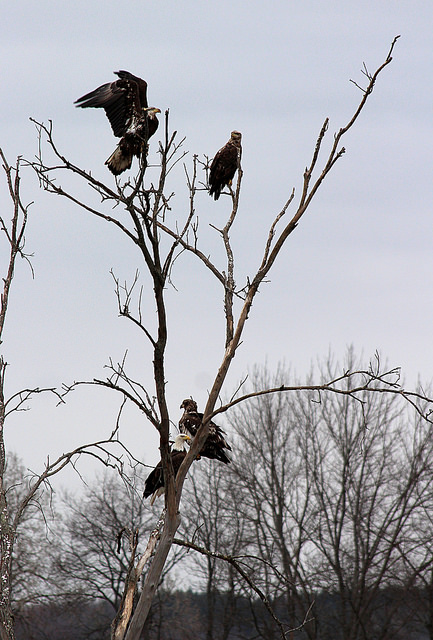By Jeff Tome, Public Engagement Specialist
I start many days at Audubon with a quick hike to the Blue Heron Overlook. It’s a fast hike that I can do in a few minutes, but it centers me and lets me focus on the day ahead. Sometimes there is amazing wildlife on the trails: otters, swans, and cranes; sometimes there is just a few Canada Geese and some frogs. I take each day as it is and enjoy it.
It’s weird how small things in the landscape can change my mood. Sandhill Cranes and River Otters fill me with an irrepressible joy like a child opening presents. Turtles and muskrats give me a small, secret smile. It’s a smile of recognition, of acknowledging that they are in the landscape and we are sharing the morning together. They are there too often to give me huge joy, but their presence is soothing. I would notice it if they disappeared.
A disappearance is what inspired this article. My trip to the Blue Heron Overlook has a routine, just like many things I do. I get dressed in the same order every day: underwear, shirt, pants, socks. I shower and shave the same way every day. Everything has a pattern. I didn’t know this about myself until a few years ago, and now it pops up at the weirdest times.
My Blue Heron Overlook routine was not one I knew I had until it was disturbed. There are certain places where I have seen a lot of wildlife, so my eyes go to those places first.
The routine goes like this: I look to the bay on the left as I walk up, then look straight out as I get closer to the pond. As I get to the overlook, my eyes gravitate towards a dead tree in a field on the other side, then I look in the bay on the right.
So, I walked up the overlook the other day, looked at the bay, looked at the pond and looked at the dead tree – and the dead tree was gone. It was like a missing tooth in the landscape. My eyes kept trying to look at it, but it wasn’t there.
It’s weird. I remember the tree when it was alive. It stood for years after it died, the branches slowly falling off until it was much smaller. This lone tree stood sentinel over the south side of the pond. Even though it was dead, it was humming with life.

I have so many memories of wildlife on that tree. Tree Swallows would congregate on it every spring as they migrated back into the area from their warm southern haunts in the winter. There were four Bald Eagles on the tree on one memorable spring morning, which also filled me with jittery excitement as I crept out on the overlook to get a closer look.
A small group of birders went to the overlook one winter during the Christmas Bird Count on the thin hope that something interesting might be there. That dead tree held the only interesting thing: a Northern Shrike, a small killer songbird with a hooked beak and a habit of hanging it’s dead prey on thorns.
Dead trees are useful for many things. Woodpeckers hunt the insects in them and sometimes peck out holes to raise their families in. Eagles and Ospreys snap off branches and carry them off to add to their nests. Insect hunting birds, like summer Cedar Waxwings, sit on them and fly out to grab insects.
The dead tree that fell was more than a dead tree, it was decades worth of memories. It was thoughts of the Osprey that perched there before flying out to grab a fish, the kingfisher bashing the head of a fish off one of the branches, the raccoon resting in the sun. That tree, long dead, was full of life.
Now, fallen in the field, it will continue to be full of life, even though it is out of sight. Insects will continue to eat the tree up, while woodpeckers and other insects hunt them. The nutrients collected in the dead wood will feed the insects and then the birds. Raccoons will likely use it as a highway as they walk to the pond. Other predators will sit there and watch the grass below for movement. What’s left of the log will sink into the mud and fertilize the grasses of the field.
Dead trees leave the legacy that many of us want to leave – a legacy of support for those immediately after us and fertilizing the imagination of the next generation.
Audubon Community Nature Center builds and nurtures connections between people and nature. ACNC is located just east of Route 62 between Warren and Jamestown. The trails are open from dawn to dusk and birds of prey can be viewed anytime the trails are open. The Nature Center is open from 10 a.m. until 4:30 p.m. daily except Sunday when it opens at 1 p.m. More information can be found online at auduboncnc.org or by calling (716) 569-2345.


Recent Comments